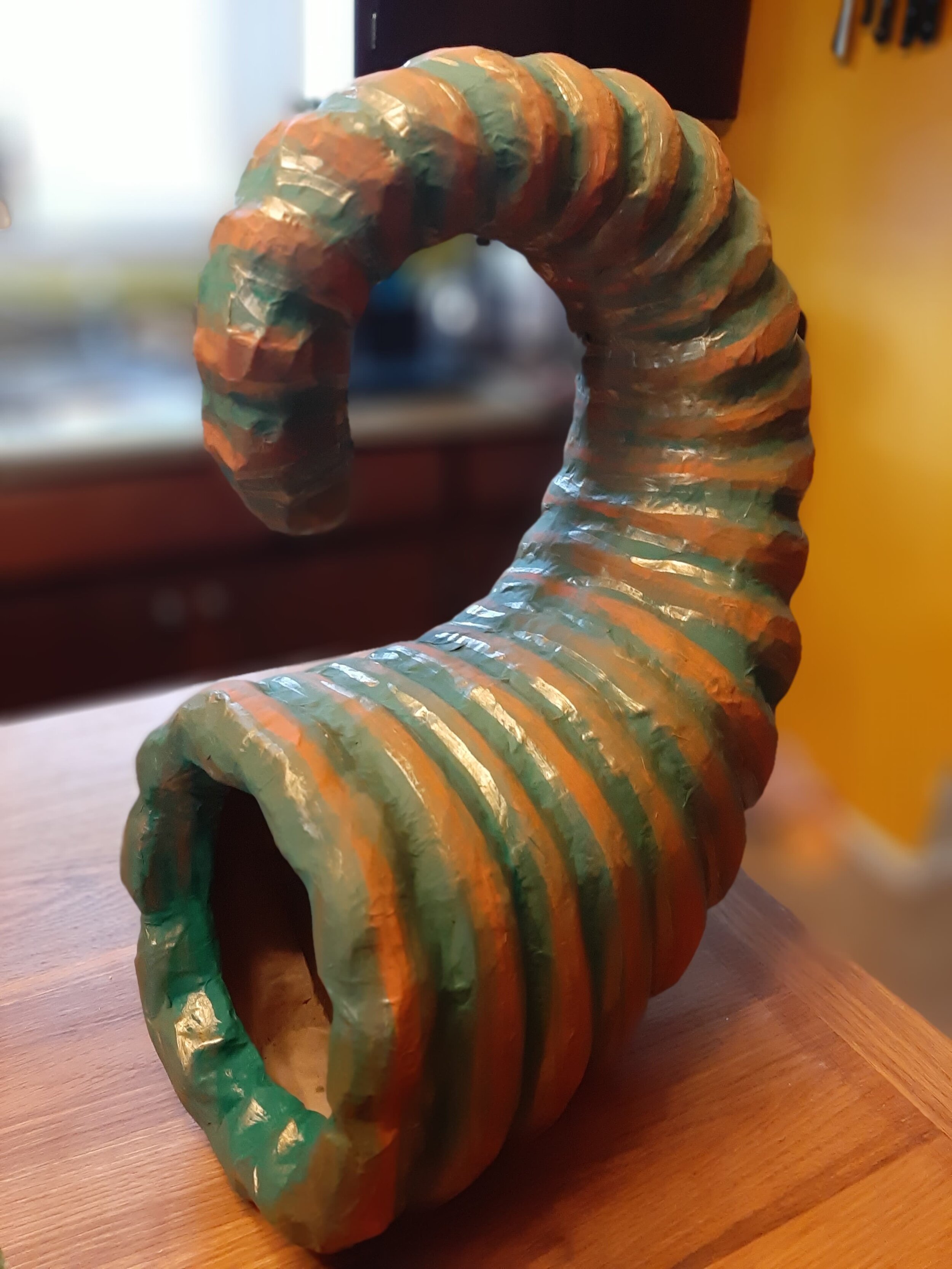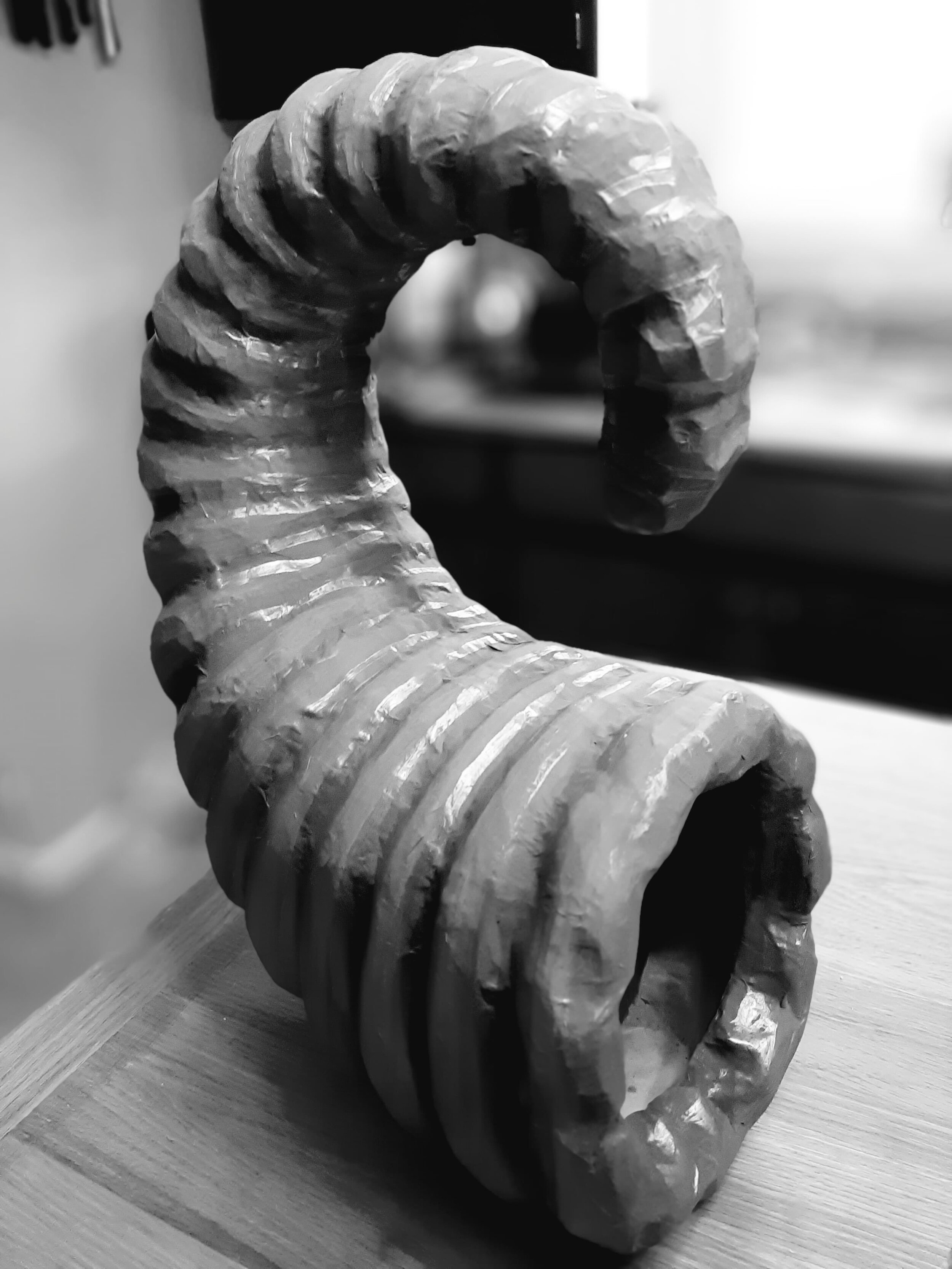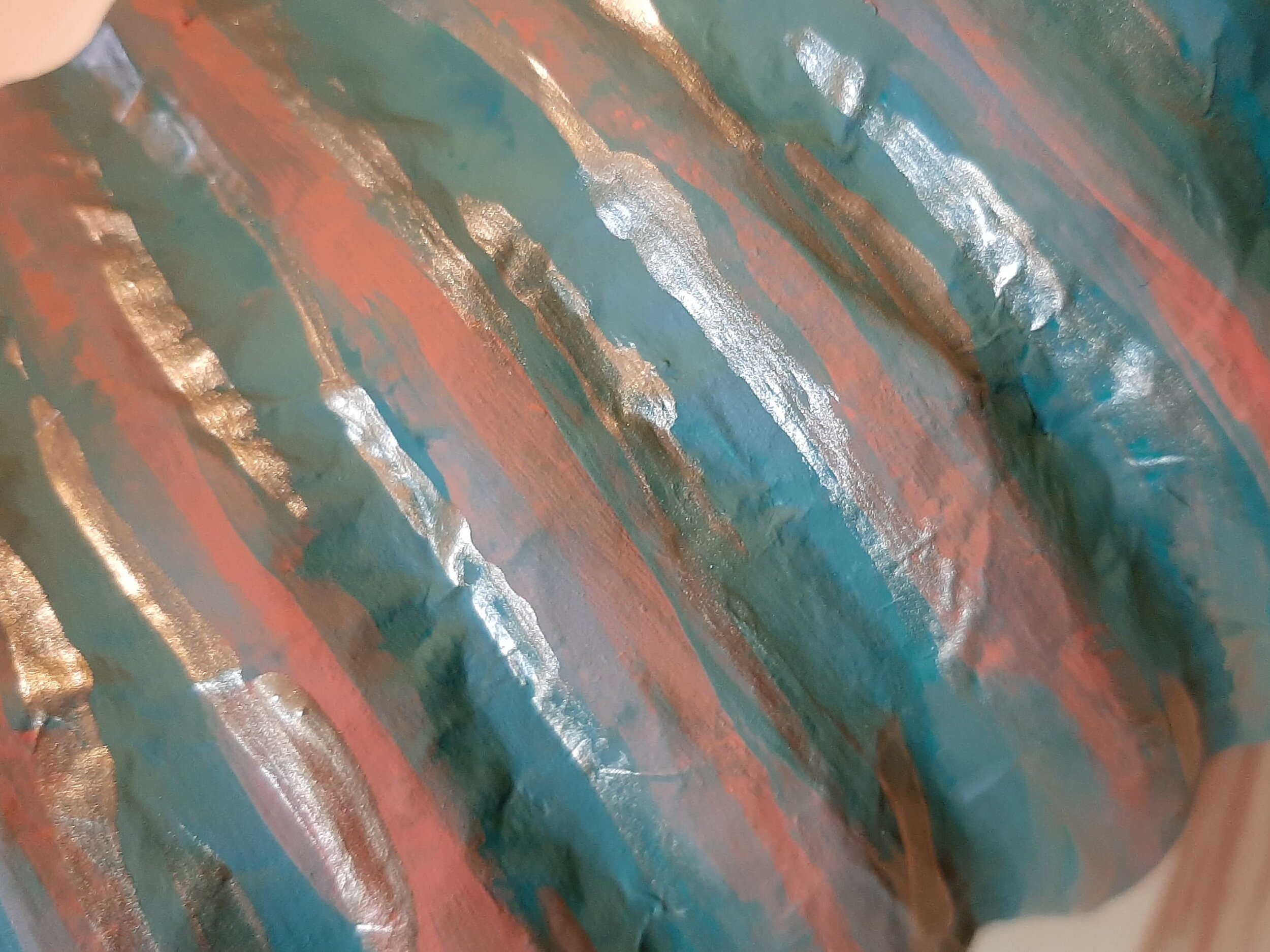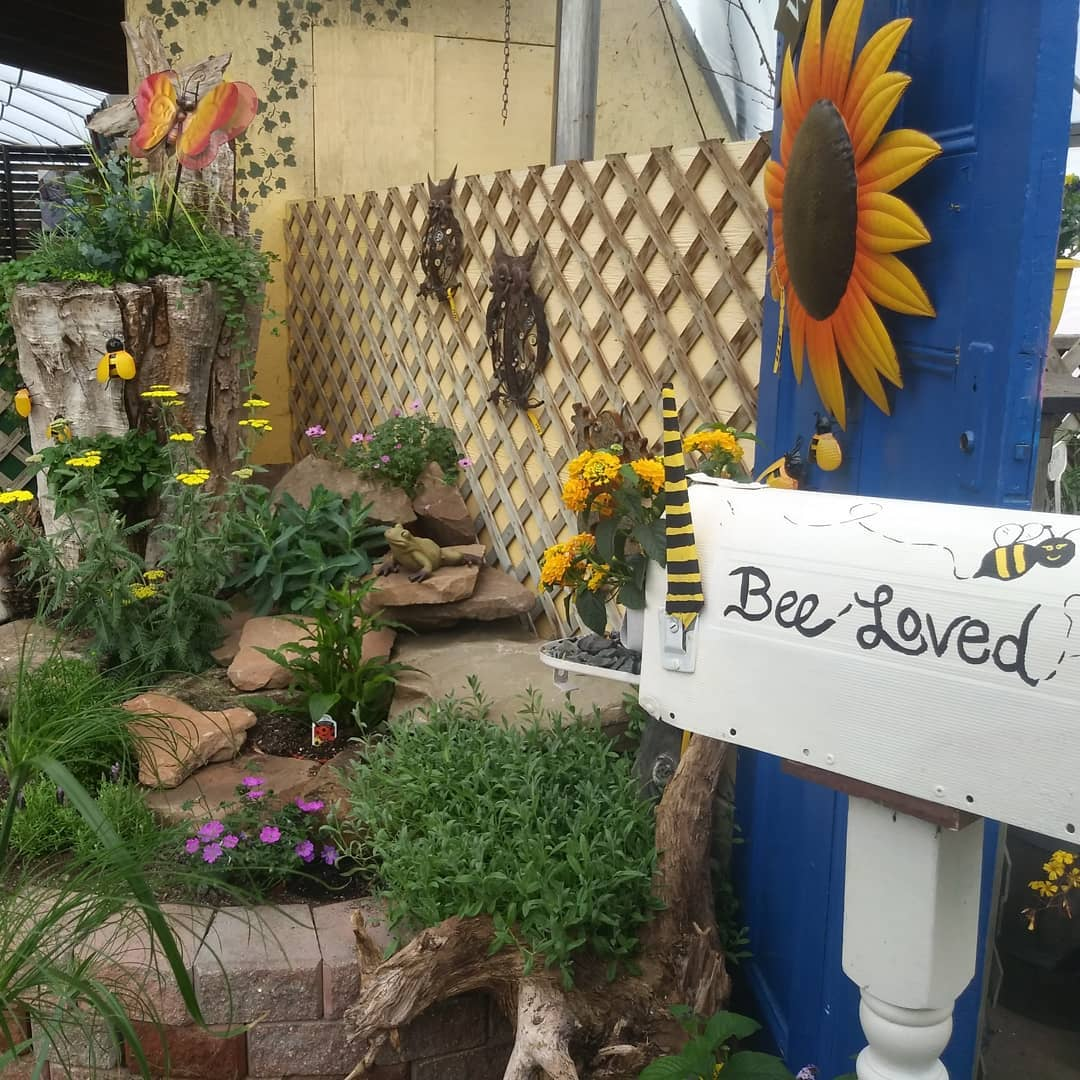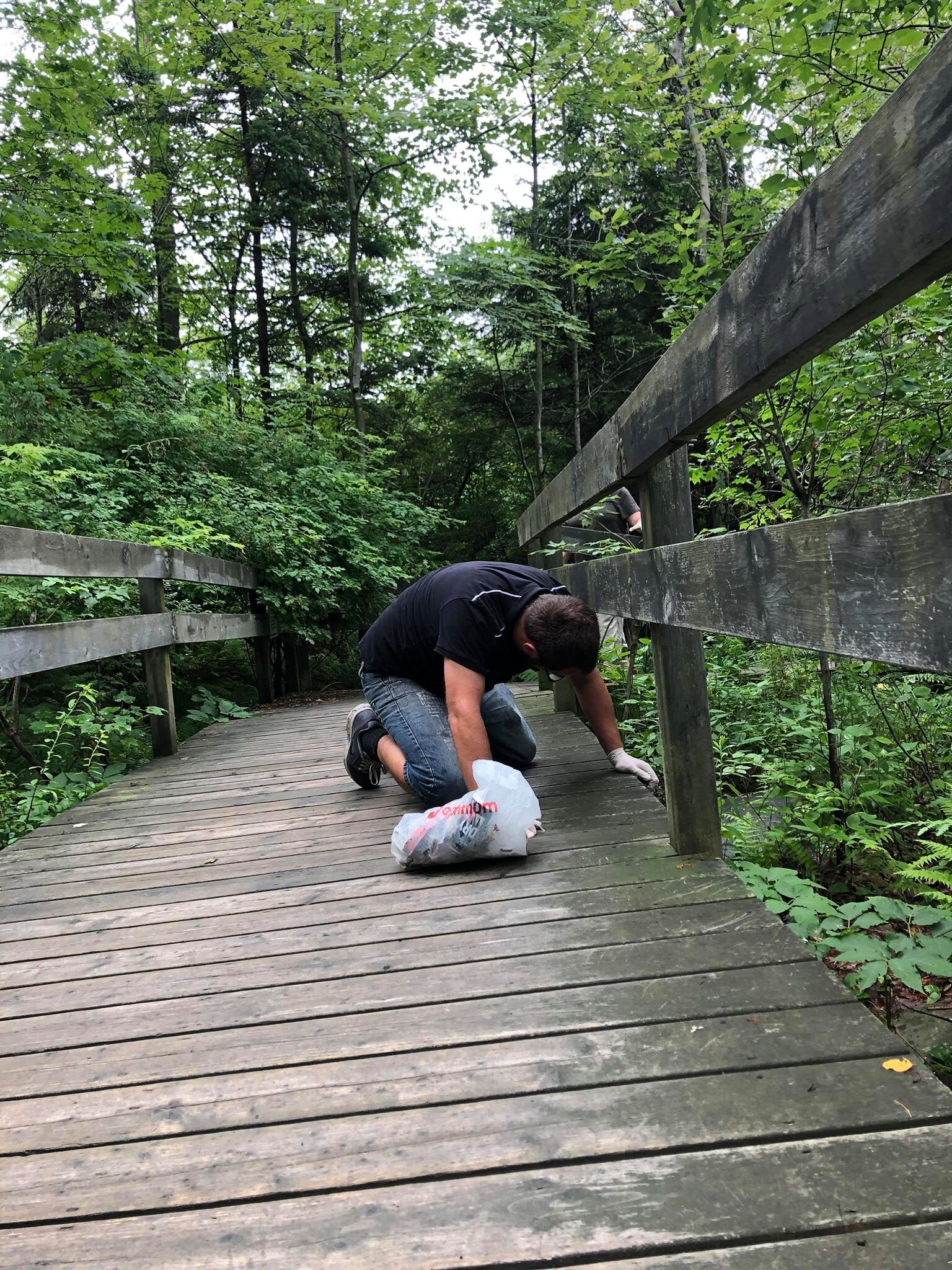Gomme’s theory of fairies is that they are the traditional representatives of an ancient pygmy race. J. F. Campbell, in his introduction to Popular Tales of the West Highlands, bears out this theory by his discoveries. By living among the Lapps, he found out that their manners and customs are similar to those ascribed to the fairies. For example, he knows one dwelling in the north of Europe which would answer the description of a fairy mound. It is round, about twelve feet in diameter, and sunk three feet in the sand. The roof is made of sticks and covered with turf. At a short distance, it looks exactly like a conical green mound about four feet high. He saw a somewhat similar dwelling uncovered in the sandhills near the sea in South Uist, Scotland. A Lapp, even when wearing a high peaked cap, could easily fit under his arm. They move around very rapidly, aided by long birch poles. They are fond of hoarding treasure. In fact, they are such people as the mist of antiquity might encircle with all the magic attributed to fairies.
The early settlers of Nova Scotia brought with them from the old lands a belief in the existence of fairies. The whole district which the town of Inverness now covers was formerly called the Shean (from the Gaelic Sithean, meaning the house of the fairies). In this district there was a small hill, shaped something like a large haystack, where the old people used to see the “little people” in thousands. People, in general, would not walk about in that place at night; but when they did sov as soon as they approached the hill the little visitors vanished. A man who owned a farm at that place was so much troubled by noises of no natural description that he sold his place in order to get rid of them.
An old pedlar used to go around the country with his wagon-load of goods drawn by a rather miserable-looking grey horse. One night he put up at Mr. MacNeil's house, near Castle Bay, and his horse was comfortably housed in the nearby stable. In the morning when Mr. MacNeil, who was up betimes, went to the stable, he was surprised to find the *stranger’s horse decorated with braided tail and mane. He expressed his surprise to the pedlar, who told him that this was a nightly occurrence, and he ascribed it to the fairies. No matter in what part of the country lie was, or what precautions were taken to prevent intruders from entering the stables, the same thing took place. When they gave the horse water into which a silver coin was placed, the plaits unraveled of themselves.
Mr. Murphy told me of another prank played by the fairies on the farm adjoining his grandfather’s lot at Low Point. A man from the old country went out reaping one day in a field of this farm, when, lo and behold! he perceived that all the stooks previously made had been turned upside down. “I didn’t think we had any of the ‘little people’ in this part of the world.” he declared in his astonishment.
The Acadians are quite familiar with these little creatures under the name of “lutin.” In olden times they used to hear, about sunset, a noise in the air like the flapping of the wings of a flock of large birds. This was followed by the sound of the rolling of wheels, the laughter and singing of men and women, the ringing of bells and the barking of dogs. On one occasion the words were heard as follows:
Men’s voices:..................Caribi, caribi,
Women’s voices: ..............Caribi, caribo,
Men’s voices:..................Houpe li! Houpe la!
Women’s voices:..............Caribi, caribo.
All together:..................Ah! ah! ah! tra, la, la.
Oh! oh! oh! dri do do
At night the “lutin” would come and make braids in the horses’ manes and drive or ride those horses that were best and swiftest. The horses so treated did not suffer any ill effects of the rough usage to which they were subjected. (Mr. Henri Le Blanc, an Acadian, gave me this information. I have consulted several other Acadians in different sections of the country, and found them all of the same opinion with regard to the mischievous “lutin”).
In general, however, the fairy tales that are current in Nova Scotia are importations from the Celtic lands that have been handed down by oral tradition. A good specimen of these tales was obtained for me by a kind friend from Mr. Neil MacLellan, of Broad Cove. He told it to her in Gaelic, and she translated it. It is called “Donald MacNorman and the Fairy Child.”
Many generations ago there lived in one of the glens of Scotland a kind old man of the name of Donald MacNorman, and his wife, Red Janet. Their home was in the upper part of the glen near a big rock. The glen was surrounded by high mountains. There was nothing to break the silence of their solitude except the murmur of a river as it flowed gently past their door, and the song of the birds as they sang sweetly in the grove above their house.
Many a time Donald would stand listening to the moaning of the wind on the craggy mountain tops — those mountains that had been buffeted by many a fierce gale for hundreds of years.
No stranger from land or sea but was welcome at Norman’s house. His home and table were at the disposal of the traveler. This was a satisfaction to him, for he felt that he was rendering service to others.
As is the case with every other mortal, Donald’s happiness was not complete. He had no heir who would hand down his name to future generations. But Donald had great faith in the fairies, and firmly believed the strange stories he had heard about them from his ancestors. No doubt his surroundings had something to do with confirming this faith. He felt that they might do for him what they had done for others, and his confidence in them was not in vain., for the fairies gave him to understand that the long-desired heir would one day in the near future come to gladden his home. At this news his happiness knew no bounds. No robin on the branch, nor nightingale in the glade, sang sweeter than he.
One fine evening, on arriving home from his boats, he was met by the nurse, who placed a beautiful child in his arms. There was great rejoicing. The whole neighborhood assembled, and for days the glass went the rounds to do honour to the little stranger.
Everything went well for a time. There was not a cloud on Donald’s horizon that little Norman did not dispel. But, alas! the day was near at hand when Donald’s brightest dreams and sweetest hopes were to be shattered. One dry, cold day in spring, when Donald and Janet were working in the fields, they left a little girl to take care of the child. After putting him to sleep in the cradle, the girl went out to play. When she came back what was her surprise to find instead of the healthy child she had left in the cradle, a thin, miserable little infant.
Immediately the little girl ran to tell the parents. The news soon spread abroad, and great sympathy was felt for the grief-stricken father and mother. The search was made high and low for little Norman, but without success. Finally, in despair, Donald thought he would have a look at the stranger who replaced his beloved child. Standing over the cradle, he raised his hands in horror, saying: “May God be between us and you. I know this creature does not belong to this world.” Janet said that she would not close an eye while the creature was under the roof. “If that is the case,” said Donald, ‘‘you will be without sleep for many a day, for it does not seeni to be in a hurry to leave.” Then they began to wonder what they would do about the child. The only way they could solve the difficulty was to keep it and treat it kindly. The child seemed to respond to their treatment, for it seemed to be enjoying life.
At last Donald and his friends came to the conclusion that it was the fairy queen who had taken little Norman away and had put this child in his place. So Donald was advised to place the child on the big rock above the house, and leave it there all night. If the fairy queen should hear it cry, she would come for it and leave Norman in its place. So this was done. Donald hoped that if the fairy queen failed to come for it, the eagles might carry it off. Early next morning he went to the rock, but found that neither fairy queen nor eagle had come for the fairy child. The only thing to do was to bring it back home.
After this it became more intolerable than ever. It kept up a continual howl night and day; and like the lean kine of Egypt, the more it ate the thinner it got.
Then, a lame tailor came to Donald’s house to make him a suit of clothes. It was harvest time, and all were busy. After breakfast Janet went to the fields with her husband, and left the fairy child in the tailor’s charge.
They had not gone a long time when the child raised itself on its elbow in the cradle and looked cautiously around. When it saw that they were alone in the house, it turned to the tailor and told him not to be afraid, for, if he promised not to tell anybody, it would play for him the sweetest tune he had ever heard. Then it pulled a chanter from behind it, and began to play. The tailor was so entranced that he could not sew another stitch. He stuck the needle in the coat he was making, crossed his legs, and listened. But he was not long in this position when he saw twenty maidens dressed in green cloaks come in. Then music and dancing began in earnest. The tailor with his eyes almost jumping out of his head, sat watching them. At last he jumped up, threw the coat away, and joined in the dance. During the dancing he made an attempt to swing one of the maidens, but, to his astonishment, he found that she was only a shadow. Once when turning around, one of the maidens struck him such a blow that he saw stars. Raising his hand to ward off the blow, he found himself seated in his chair with his coat on his knees, just as he was before the music began. On looking around, he found that there was no one in the house but himself and the child lying quietly in the cradle as if nothing had happened. The harvesters came home, and the tailor was very happy when the coat was finished, for he did not wish to go through a like experience again.
Shortly after this, the “little one” began to get up and sit by the fireside when the others went to bed. It would spend hours rocking itself and singing sad songs. This used to annoy Donald, so one night he threatened to get up and punish the strange creature for disturbing their night’s rest; but Janet begged him not to have anything to do with the child lest some misfortune might befall them.
Donald was getting ready to go to the forge one day when, to his great surprise, the fairy child asked him to get news from the blacksmith for him. The news that Donald brought was that the forge on the hillside was burned to the ground, anvil and all. At this the child got excited and screamed out: "My loss! My loss!” It took the chanter in its hand and began to play, at the same time leaping and running over the hills. When Donald, who was watching the performance, returned to the house to relate to Janet what he had seen and heard, lo and behold! he found in the cradle his own little Norman, lying quietly and smiling at him.
If there was sorrow at the loss of Norman, there was a hundred times more rejoicing at his recovery. A great feast was prepared, at which all the neighbors were invited, the lame tailor included. If there was joy at Norman’s birth, there was still greater joy at his return from the land of the fairies.
The story that follows was given firm credence by the grandfather of the man who told it to me.
One Christmas Eve. as two neighbors were returning home with two kegs of whiskey slung on their backs, they saw the Hill of the Fairies open, and in they went. Being off their guard, they forgot to stick a piece of steel — a knife would do — into the upper part of the door. Had they done this, the fairies could not have shut them in.
Two years from that evening two of their neighbors saw the Hill open and the dancing going on. They stuck steel in the door and entered. The first two, who, they suspected all the time were in the Hill with the fairies, were there and no mistake, standing inside the door with the kegs still on their shoulders. The newcomers said: “Come, come home, at once.” One of the first pair answered: “Wait a moment until this reel is finished.” They dragged them out rather violently, however; and, of course, they would not believe but that they had been in the Hill a very short time. But when they got home and saw how their children had grown, they believed it well enough.
Mr. Murphy told me this story, which he heard from his grandfather. Once upon a time a woman was obliged to leave her child in the house and go to attend to some outside work. On her return the baby was crying loudly and could not be pacified. Day and night he kept up a continuous roar, until the mother became suspicious that a trick was' being played on her. ‘‘Wise” people whom she consulted advised her to go to Fairy Stephen for advice in her trouble.
Now, Fairy Stephen was a man who had been taken by the fairies and had lived among them for several years; consequently, he was well versed in fairy ways. In fact, although he had been restored to his home, yet at certain times he had to return to the fairies, and when he came back he looked thin and wretched.
Stephen told the woman that she could discover whether or not a trick had been played on her by the fairies in this way. She was to take a dozen eggs, pierce them, and remove their contents; then fill the shells with water and place them before the fire. Then she was to go out of doors, secure a cudgel, and watch what the baby would do. If he tried to get out of the cradle, she was to lay on to him with the cudgel.
The woman did as she was advised. When the water in the egg-shells had almost reached the boiling point, she saw the baby rise up in the cradle, and heard him say as he glanced cautiously around: “I am one hundred years old, and I never saw so many little pots boiling with water before.” The woman lost no time in using the cudgel. The more she beat him the louder he cried. In the midst of the whipping a fairy woman entered with a child in her arms. “Stop beating my child,” she said. ‘‘There is your own and give me mine.” The woman very gladly did so. Stephen was soundly thrashed by the fairies for his share in the exposure.
Another fairy tale has been handed down in Mr. Murphy’s family for generations. A great - great - grand uncle of his went out to work in a field near the shore one day. Soon he perceived a little man seated out at a nearby headland. Curious to see what the little creature was doing, he walked up to him and found him making a little shoe, into which he was putting the most beautiful work imaginable — work which could be done only by fairy fingers. “How I wish I could make a shoe like that!” he exclaimed. “I am not so good a shoemaker as the man behind you,” answered the fairy. The man, who was versed in fairy ways, knew that the fairy wished to distract his attention in order to escape; so, instead of looking behind, he seized the shoe and made off with it. The shoe was kept in his family as a very precious heirloom. He regretted very much that he did not bring it with him to this country. He often described to his grandchildren its beautiful delicate workmanship.








